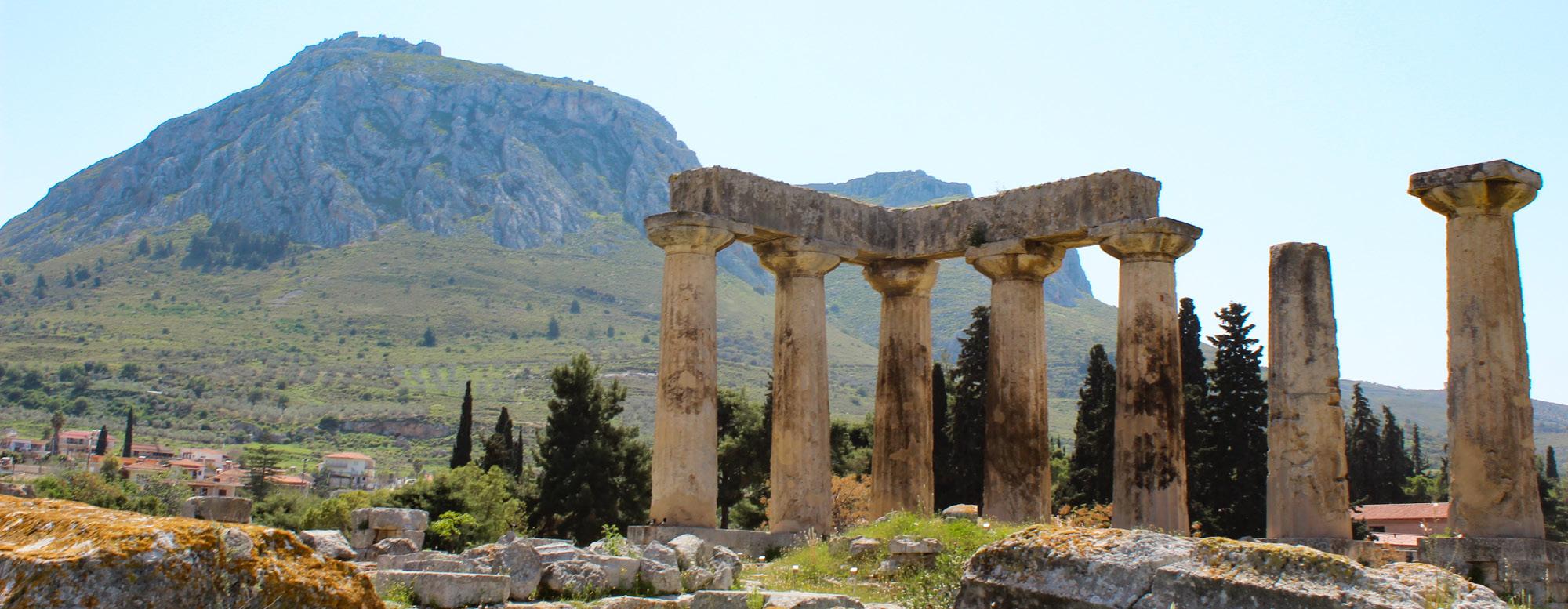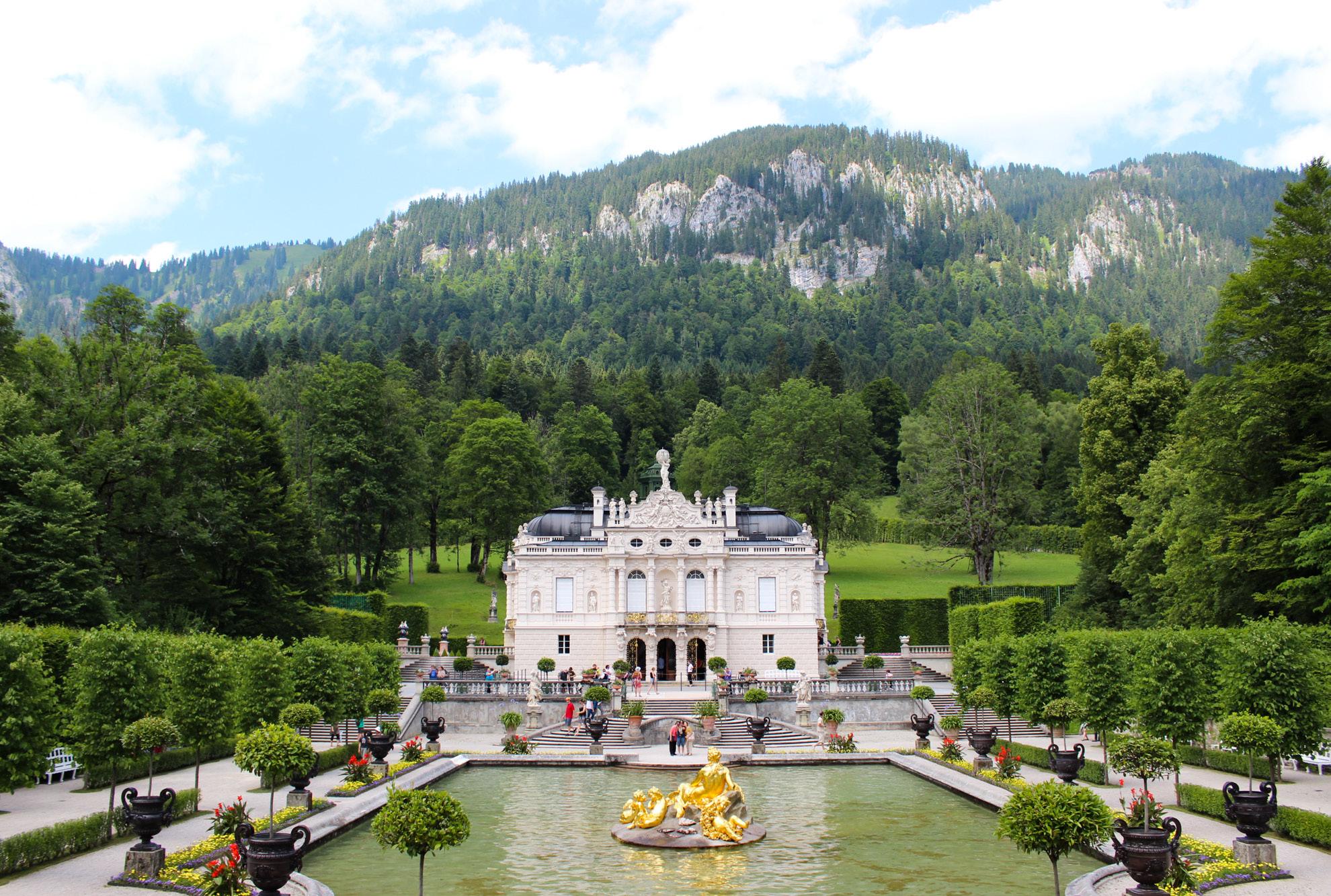
8 minute read
Embracing changing landscapes

One question I have always been asked is, “Where are you from?”
I have heard this question more in my first year of college than ever before. For most, this is a simple question with a one-word answer. However, for me, it rings a little differently.
I usually answer, “Phoenix,” for time’s sake. Yet, an unsatisfied half-smile always lingers on my face when the word leaves my mouth. I spent my high school years in Phoenix, but it is not my “home” — it is not who I am.
I have lived in three states and four countries. Being raised in a military family, I have moved nine times in my 20 years of life. I cannot define myself by a single place.
I am a mixture of landscapes, cultures and experiences; a blend of all my nine homes.
As much as I would love to describe each home, it would take a great deal of time, so I’ll recount two which were paramount in creating who I am now: Washington state and Europe.
One week after my seventh birthday, my family moved to Olympia — the capital of Washington. Coming from San Antonio, Texas, I had never experienced so much nature right outside my house. Luscious pine trees loomed over every street corner. Chipmunks, red foxes, rabbits and deer constantly greeted me on walks. In the distance, Mount Rainier stood tall behind our house, its white, icy peak snuggled in a blanket of greenery.
An hour away from Olympia is Seattle, the largest city in Washington. Its famous attractions include the 605-foottall Space Needle and Pike Place Market.
Pike Place Market is the largest continuous farmer’s market in the country. It is a colorful and bustling market with over 220 independently owned shops and restaurants.
I have many memories of the market, however, they are all tainted by the overwhelming odor of fish.
Numerous fish stands in Pike Place, including the famous 93-year-old Pike Place Fish Market, embody the coastal culture of Washington. With fish-throwing workers and vibrant displays of sea and freshwater creatures, the markets are breathtaking to fish enthusiasts. For fish haters like me, on the other hand, they are a nightmare. To this day, I cannot stand the smell of fish and I will always credit the Pike Place fish stands as the reason.
While Seattle had a life of its own, my fondest memories reside in the nature of Washington.
My family would often visit Mount Rainier National Park, the home to the tallest mountain in the state with 25 named glaciers. Locals and tourists always flocked to the mountain on beautiful days, but with hundreds of recreational trails, it never felt crowded.

In summers on Mount Rainier, we hiked through grassy fields painted purple and red by the blooming wildflowers.
During winters, we bundled in our snow gear and sledded down the mountain slopes joining in the laughter of many families.
On other adventures, we canoed on the Puget Sound — an inlet of the Pacific Ocean, camped in Olympic National Park and toured Mount St. Helens.
My passion for the outdoors began in Washington. It is why I desire to constantly hike mountains, swim in icy waters and camp under treetops, all desires I pursued by coming to northern Arizona.
I enjoyed my life in the state for three years before I started my next adventure.
After I turned 10, my family moved to Belgium, the land of beer, waffles and chocolate. When I tell people about Belgium, they tend to follow up with, “Where in Germany is that?” It never fails to make me laugh but to be fair, I did not know about the country until it became one of my homes.
I like to describe Belgium as a quiet country compared to its touristy neighbors — except when it is FIFA World Cup season, whereas the screaming of Belgian Red Devil fans echoes throughout the streets and in every house.
The country is covered with rolling hills that stretch for miles and it is constantly wet and cloudy, with an average of 200 days of rainfall a year.
I believe the heart of Belgium lies in its historic cities, with their elaborate stone and brick buildings and cobblestone streets that are rarely overcrowded with tourists.
Christmas in the cities is extra special.
My family lived nearest to Brussels, the Belgium capital.
One of the main attractions of Brussels is the Grand-Place the city’s central square. During the Christmas season, purple and blue lights illuminated 400-year-old stone buildings in the square.
In Bruges, a city only an hour from Brussels, an ice sculpture festival was held every year during winter. Countless magnificent, chilling sculptures commemorated an important cultural event of the year. For my first year, 2013, the festival was based on the popular release of the movie “Frozen.” The second year celebrated the finishing of “The Hobbit” trilogy and included an enormous ice sculpture of the dragon Smaug.
My family spent school breaks exploring other European countries such as Switzerland, Italy, Greece and the Netherlands. Before moving back to the United States, I also had the opportunity to briefly live in England and Italy.
I was engulfed in an array of cultures. I became fond of hearing four different languages around me as I ate pastries at a cafe. I loved grabbing gelato every time I went out in Italy and ordering a whole pizza to shamelessly eat alone. Joy filled my heart each time the Belgian team scored a goal in the FIFA World Cup and boisterous chanting instantly overtook the town.

I miss visiting museums and castles, swimming in the Mediterranean Sea, trekking through the Alps and getting my breath taken away by vibrant, beautiful tulips in the Netherlands.
Europe is the reason I will never be able to sit still. People tell me I have traveled the world, but I know I’ve barely seen anything. I have only been to two of seven continents; there is so much life and culture I have yet to experience.
This longing for adventure is what drives me to pursue my degrees in photography and journalism with the hope to eventually spend my life traveling the globe and capturing the beauty of the people on it.
Phoenix is special to me, but it is not who I am. When someone asks where I’m from, I wish I could express everything I just wrote, and more, in a single word with pride and excitement. I have not yet figured out how to, but one day I will.
Green Jacks is a student-run club that encourages sustainability by hosting different events — including street clean-ups, clothing swaps and biweekly meetings to discuss future plans. Grace Meinema has been involved in the club since 2021 and is now the president. She said she advocates for the planet in any way she can.
“Green Jacks was founded around 2012,” Meinema said. “I became involved with it, though, during my freshman year. I was excited to make a difference with other young adults who are passionate about our planet.”

Meinema was asked to be president during the 2022-23 school year by the previous president of Green Jacks. She said she is honored to take a lead role in the club and aspires to help it reach its maximum potential.
Green Jacks has seen a significant increase in regular attendance at its events and meetings. The group has gained over 200 followers on Instagram and has a steady 15 to 30 attendees at meetings compared to five to 10 in previous years. Due to the pandemic, Green Jacks’ attendance dropped significantly. Meinma said Green Jacks has struggled to motivate students to come to their events and meetings.
“I hope that Green Jacks never stops growing and evolving,” Meinema said. “I hope each semester brings in new people, events and collaborations. I hope Green Jacks can become a regular part of many students’ routines and keep up with consistent attendance.”
Green Jacks has worked with multiple organizations on and off campus to grow its audience. Since January, they have collaborated with the City of Flagstaff Sustainability Office, Flagstaff Water Services, NAU Green Fund, ASNAU, SUN Entertainment, Thrift Jacks, The Taylor Swift Society NAU, FFNAU, NAU Abaya Yala Organization, People for the Ethical Treatment of Animals, Oak Creek Watershed Council and SSLUG.
SSLUG is a community garden that promotes sustainability and organic growing methods on campus.
Sarah Tabak is a coordinator for SSLUG. She said the garden was established to create a hands-on learning experience.
Tabak is a second-year graduate student studying sustainable communities and an AmeriCorps member at SSLUG.
“The SSLUG Garden was started by graduate students in the sustainable communities program about 15 years ago,” Tabak said. “The space outside of Social and Behavioral Sciences West was underutilized and they were looking for a way to bring in more green space.”
Like Green Jacks, SSLUG encountered issues with engagement. With students leaving NAU and social distancing, the club became less prominent and the garden was at risk of being closed.
Tabak has used her time with the club to bring the garden back to life and restore student engagement. Her commitment to outreach resulted in SSLUG having over 100 volunteers, an increase from the steady 25 volunteers seen in the first semester back with in-person classes.
“I think that environmental clubs have had a lot of increased engagement lately,” Tabak said. “With the climate crisis and everything, this kind of post-COVID reengagement has helped SLUGG.”
One challenge SSLUG struggles with is the continuity of leadership, as many members will be graduating this semester. With Flagstaff having a short growing season, most of the gardening takes place over the summer when some students are not in town.

Recently, they have grown into an established community allowing people to connect over sustainable practices.
Fossil Free NAU is another student-led campaign that has seen positive development in recent years. FFNAU’s goal is to create a future free of fossil fuel emissions that pollute the air.

Kim Curtis founded the club in partnership with Fossil Free Arizona. FFNAU collaborates with students minoring in community engagement to offer the opportunity to practice collaborative skills related to community involvement and sustainability practices.
By hosting weekly meetings, members of the club have worked to create a space for students to educate themselves on the climate crisis. As a club, FFNAU has also attended city council meetings and participated in protests together, urging the community to take a stand against actions that increase air pollution.
FFNAU member Alyson Horton said she hopes to spread her passion for the environment to the community through sustainability.
“A year ago, there were only four members in FFNAU and we struggled organizing,” Horton said. “Now, there are 12 to 15 members at our weekly meetings who are working hard to make a change in our community. We focus on building relationships with our community members which has helped our overall growth as an organization.”
Members of FFNAU have advocated for the NAU Foundation to divest from the fossil fuel industry. The club has reached out to the Board and the office of President José Luis Cruz Rivera to attempt to make this change.
Moreover, FFNAU works with other sustainable groups and organizations to bring awareness to the impacts of climate change.
“We will be focusing more on outreach and gaining support,” Horton said. “Thanks to the efforts of other community members and Ph.D. students, we don’t have to focus on the gritty financial details as much. We also hope to put on divestment teach-ins and informational workshops while continuously collaborating with other NAU clubs.” By working together, these environmental groups are leveraging their collective power. As they continue to grow and expand their impact, Green Jacks, SSLUG and FFNAU are motivating students on campus to be aware of the effects of climate change.










